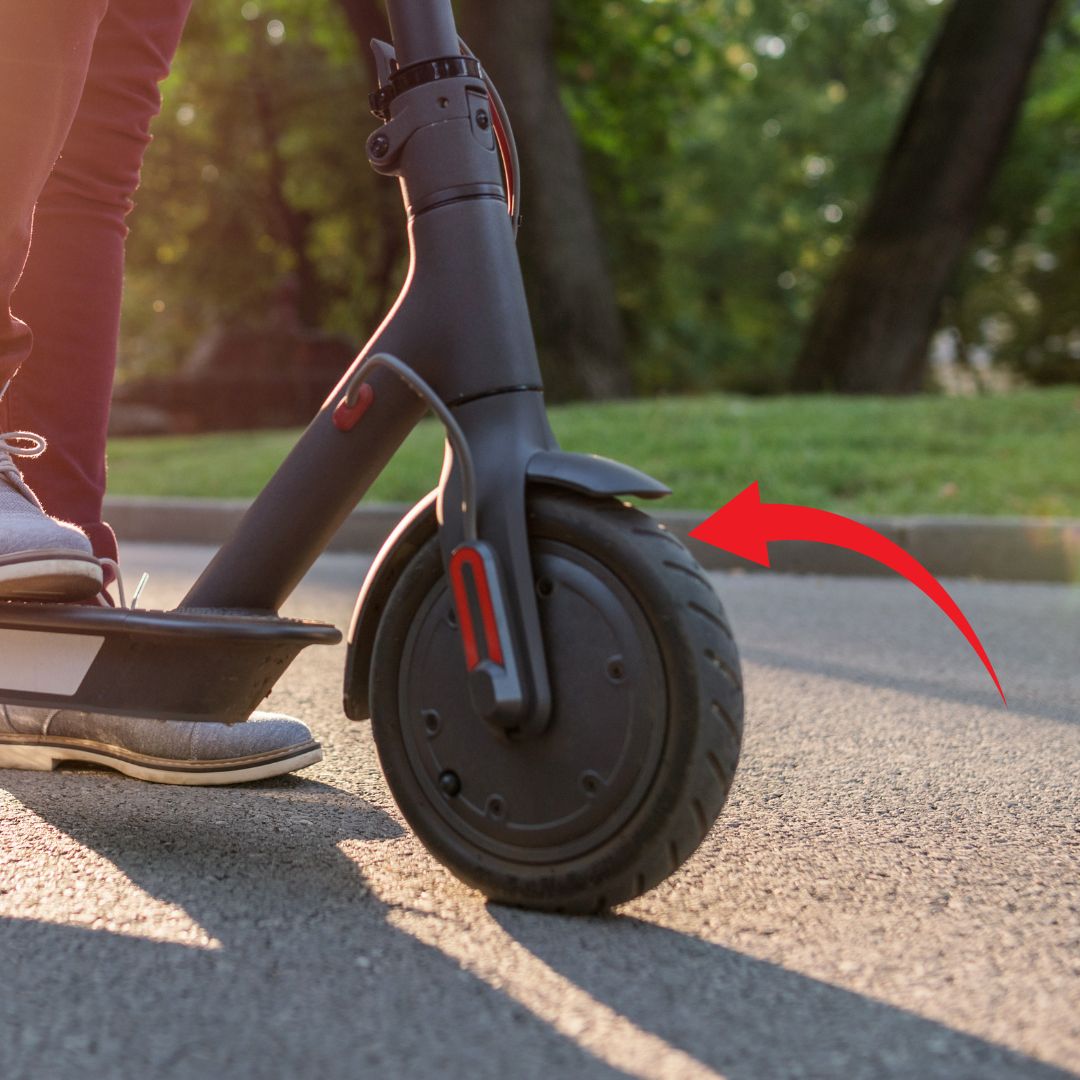
Updated: 12.05.25
Want to enhance your electric scooter rides? Proper tyre pressure ensures safety, smoothness, and better battery life.
1. Why Tyre Pressure Matters
Optimal tyre pressure improves ride stability, reduces battery drain, and extends tyre life, making your rides smoother, safer, and more eco-friendly.
2. Follow Manufacturer Recommendations
Stick to the manufacturer’s recommended tyre pressure for the best performance. Check your owner’s manual or a sticker on the scooter, and adjust based on your weight for a balanced ride.
3. Risks of Underinflation
Underinflated tyres cause sluggish handling, increase puncture risk, and drain your battery faster due to higher drag.
4. Dangers of Overinflation
Overinflated tyres lead to a harsh, bouncy ride, reduced control, and faster wear in the centre, increasing puncture and blowout risks.
5. Ideal Tire Pressure Range
Most electric scooters perform best at 40–50 PSI, but check your model’s manual as factors like weight and terrain may require adjustments.
6. How to Check Tire Pressure
Checking tyre pressure is simple with these steps:
- Locate the valve stem on the tyre’s side, similar to a bike or car tyre.
- Unscrew the valve cap to access the stem.
- Use a reliable tyre pressure gauge (digital gauges are best for accuracy) and press it firmly onto the valve stem.
- Read the pressure in PSI and compare it to your scooter’s recommended PSI from the manual or a sticker on the scooter.
- Adjust as needed: add air with a pump if too low, or release air if too high by pressing the valve stem.
- Reattach the valve cap securely after adjusting.
Always check when tyres are cold (before riding) for accurate readings, and add air gradually to avoid overinflation.
7. Safety Tips for Optimal Pressure
Avoid overloading your scooter to prevent extra tire strain, and check pressure before rides, especially in varying weather conditions.
8. Tire Maintenance and Battery Efficiency
Proper pressure reduces drag, extending battery life and improving ride quality and stability. Regularly clean tires, inspect for wear, and replace them when worn to maintain performance and safety.
Ready to optimize your ride? Check out our electric scooters for a smoother journey!
Frequently Asked Questions
What is the ideal tire pressure for my electric scooter?
Most scooters require 40–50 PSI, but check your manufacturer’s manual for the exact range based on your model and weight.
Can I use any tire pressure gauge for my electric scooter?
Yes, most standard gauges work, as long as they measure within the PSI range for scooter tires. Check when tires are cold.
How often should I check my electric scooter’s tire pressure?
Check before each ride or at least monthly to maintain ride quality, stability, and tire life.
What should I do if my scooter’s tires keep losing pressure?
Inspect for punctures or valve issues. Repair or replace tires as needed, and perform regular maintenance to prevent leaks.
Get in Touch 🚀
Loved our guide on ideal tire pressure for electric scooters? Explore more tips!
Visit RiiRoo.com or use our Live Chat for ride-on toy questions!





Share:
Here's 10 Ways to Maximise Your E-scooter Range
Here's How To Clean Your Electric Scooter (THE RIGHT WAY)